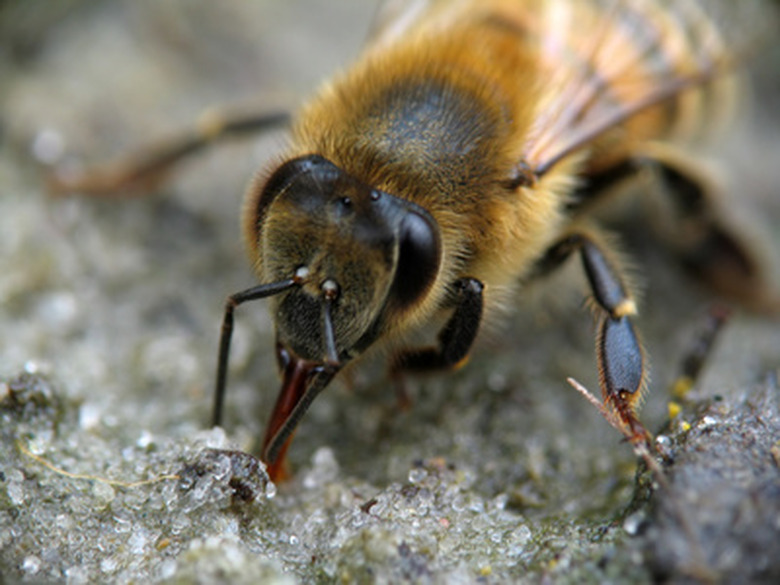How To Get Rid Of Burrowing Bees
Things Needed
- Insecticide powder or granules
- Hoe or metal rake
- Garden fork
- Water hose
Tip
Among the recommended insecticides for use against burrowing bees is Sevin, according to Utah agricultural extension county director Dean Miner; the active ingredient in Sevin products is Carbaryl, and it is widely available. Other suggested products are those with the active ingredients permethrin, deltamethrin, tralomethrin, bifenthrin, tetramethrin, allethrin and esfenvalerate, often used in combination. It is extremely difficult to eliminate an entire burrow of ground bees in a single season. Be alert to their activities and be prepared to repeat these steps, if necessary, in a few months.
Warning
When using pesticides, carefully read the package directions and follow all suggested precautions. The recommended products are generally considered safe for home use, but use reasonable caution in limiting skin contact and other direct exposure.
Burrowing or mining bees are usually "solitary" species, meaning that they do not form cohesive colonies like honeybees. They are beneficial insects, important to the pollination of many types of plants; their burrowing activities do not harm plants, and may even help them by aerating the soil. However, you may wish to control these bees if, for instance, their nests are located where children play or where you need to dig. While much less aggressive than wasps or even other bee species, mining bees will defend their nests, warns Greg Stack, Illinois extension educator.
Control With Pesticide
Step 1
Apply the pesticide according to package directions in the area where the bees are nesting.
Step 2
Scrape the soil near the burrow entrances with a hoe or sturdy metal rake, disturbing the ground and exposing the soil.
Step 3
Reapply the the insecticide to the disturbed soil; when female bees come out of the nests to repair the burrow entrances, they will encounter the insecticide.
- Burrowing or mining bees are usually "solitary" species, meaning that they do not form cohesive colonies like honeybees.
- Reapply the the insecticide to the disturbed soil; when female bees come out of the nests to repair the burrow entrances, they will encounter the insecticide.
Control Without Pesticide
Step 1
Aerate the soil above and around the bees' burrows with a heavy garden fork, jabbing the fork straight down into the ground several times.
Step 2
Pour water directly onto existing burrows; it is best to flood the bees during their dormant periods, cool mornings and evenings.
Step 3
Soak the surrounding soil, saturating the area where the burrow is located.
Step 4
Repeat the flooding every few days until bee activity stops; the bees will tend to relocate to avoid the water.
